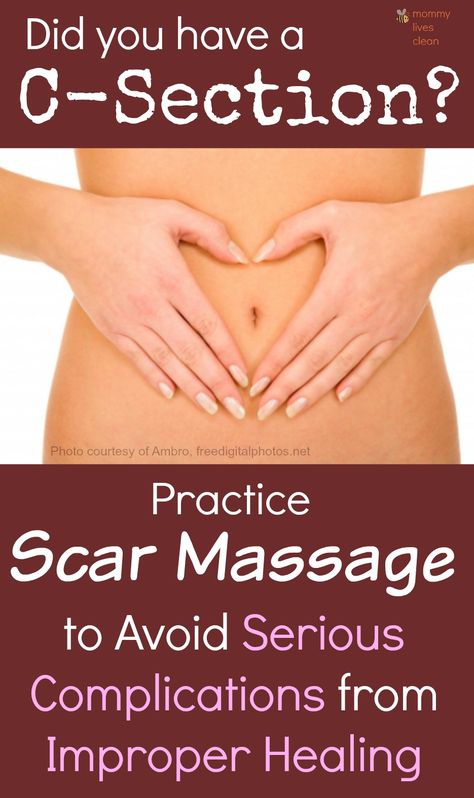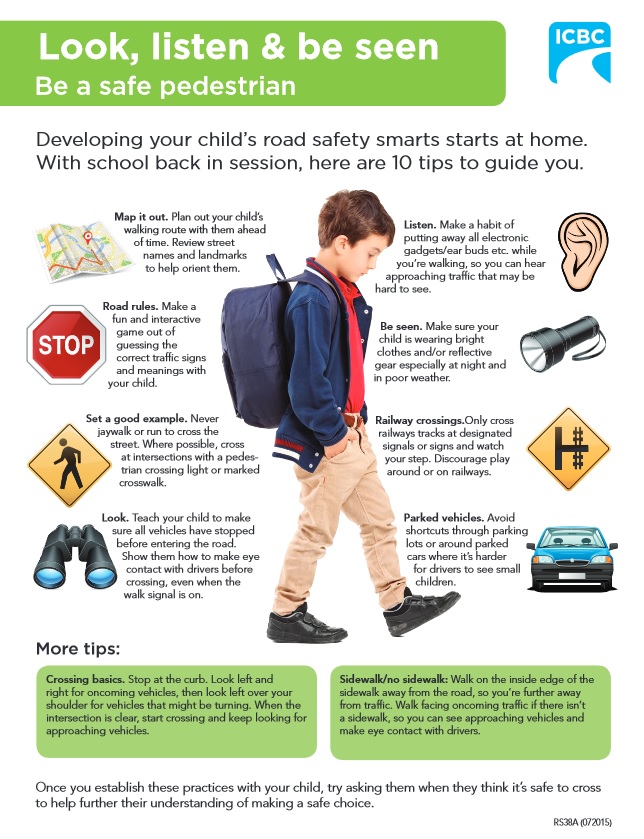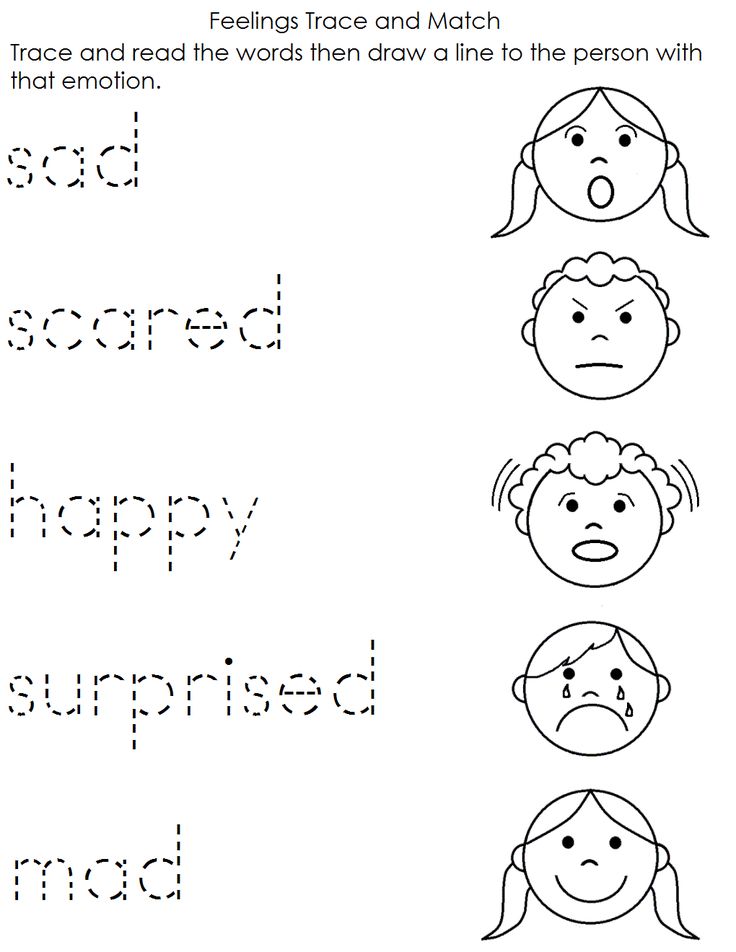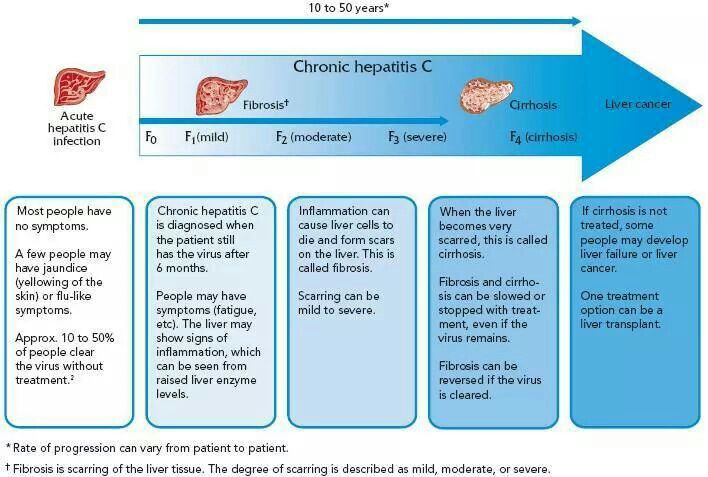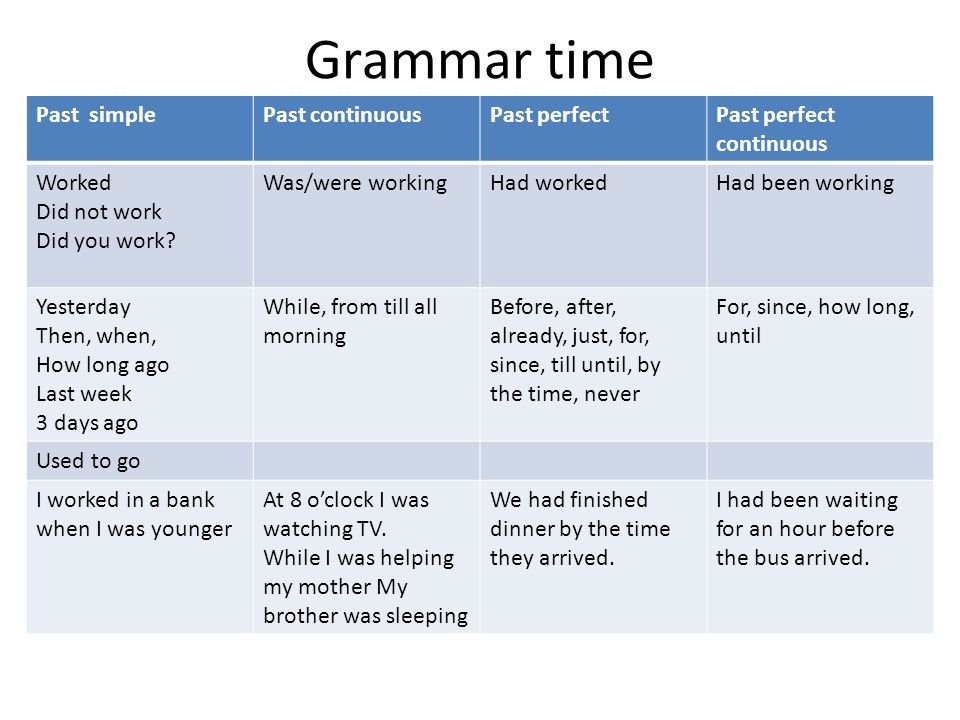C-Section healing time
6 Tips on Sleep, Pain, Diet, and Much More
Childbirth is an exciting time. You finally get to meet the baby growing inside you for the last 9 months.
Yet, having a baby can be taxing on your body, especially if you’ve had a cesarean delivery, commonly referred to as a C-section. You’ll need more time to recover than you would after a routine vaginal delivery.
Here are six suggestions to help speed up your recovery so you can spend less time sore and tired — and more time bonding with your new baby.
A cesarean delivery (C-section) is major surgery. Just like with any surgery, your body needs time to heal afterward.
Expect to stay in the hospital for 2 to 4 days after your delivery. If there are complications, your stay will be longer. Give your body 6 to 8 weeks to fully heal.
That’s easier said than done. It’s hard to crawl into bed for hours on end when you have a baby who’s demanding lots of attention.
You’ve probably heard this advice from well-meaning friends and relatives: “Sleep whenever your baby sleeps. ” They’re right. Try to sleep whenever your baby naps.
Ask for help from those friends and relatives with diaper changes and housework so you can lie down when possible. Even a few minutes of rest here and there throughout the day can help.
Take extra care in getting around while you heal. Follow these tips:
- Avoid going up and down stairs as much as you can. Keep everything you need, like food and supplies for changing diapers, close to you so that you do not have to get up too often.
- Do not lift anything heavier than your baby. Ask for help from your partner, friends, or family members.
- Whenever you have to sneeze or cough, hold your abdomen to protect the incision site.
- It could take up to 8 weeks for you to get back into your normal routine. Ask your doctor when it’s fine to exercise, go back to work, and drive. Also wait to have sex or use tampons until your doctor gives you the green light.
- Avoid strenuous exercise, but do take gentle walks as often as you can.
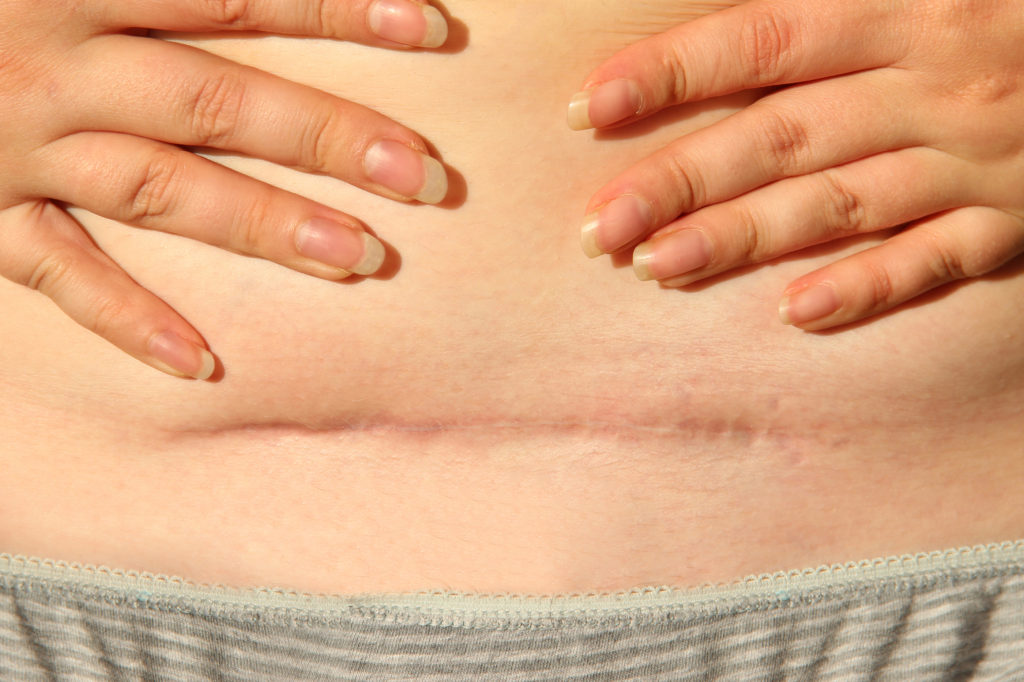 The movement will help your body heal and prevent constipation and blood clots. Plus, walks are a great way to introduce your baby to the world.
The movement will help your body heal and prevent constipation and blood clots. Plus, walks are a great way to introduce your baby to the world.
Your postpartum mental health
Remember that your mental health is as important as your physical health. Having a baby can bring up feelings you never expected.
If you feel sad, disappointed, anxious, or exhausted, do not ignore it. Talk about your emotions with a friend, your partner, your doctor, or a counselor.
Ask your doctor what pain medications you can take, especially if you’re breastfeeding or chestfeeding.
Depending on the level of your discomfort, your doctor might prescribe a pain reliever or advise you to take an over-the-counter (OTC) one, such as ibuprofen (Advil, Motrin) or acetaminophen (Tylenol).
In addition to pain medication, you can use a heating pad to relieve discomfort at the surgical site.
Good nutrition is just as important in the months after you deliver as it was while you were pregnant.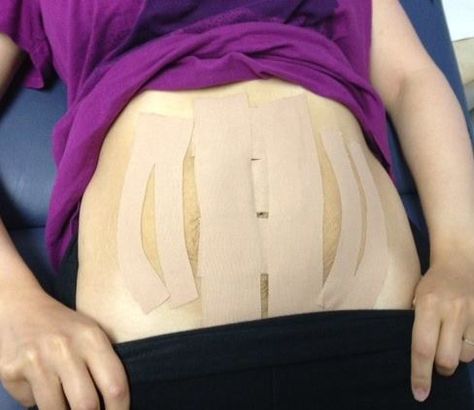
If you’re breastfeeding or chestfeeding, you’re still your baby’s primary source of nutrition. Eating a variety of foods will keep your baby healthy and help you get stronger.
A 2017 study shows that eating fruits and vegetables while breastfeeding imparts flavors in breast milk that increase your child’s enjoyment and consumption of those foods as they grow.
Also, drink plenty of fluids, especially water. You need extra fluids to boost your milk supply and to avoid constipation.
Your body will continue to undergo physical changes even after your baby is born. Changes you might experience include:
- afterpains, a type of cramping that occurs as your uterus returns to its prepregnancy size
- breast engorgement, or swelling
- lochia, a type of vaginal discharge mostly made of blood
- vaginal dryness
- diastasis recti, or the separation of your abdominal muscles
- hair loss
- skin changes, like loose skin or acne
- night sweats
- headache
Some of these, like afterpains and lochia, will eventually go away on their own. Treatments and home remedies are available for some of the others.
Treatments and home remedies are available for some of the others.
Try the following:
- lubricants or vaginal creams made of estrogen for vaginal dryness
- exercises for diastasis recti or loose skin
- supplements and topical treatments for hair loss
- topical treatments, oral isotretinoin (Absorbica, Amnesteen, Claravis), or birth control pills for acne
- lightweight pajamas for night sweats
- OTC pain medications for headache
Product picks
Check out our recommendations for postpartum hair products and postpartum pajamas.
There are a variety of options to help you manage breast engorgement, like:
- a warm compress or warm shower
- a cold compress or an ice pack
- nursing to expel the milk
- breast massage during nursing
- OTC pain medications
The 12 weeks after your baby is born are sometimes known as the 4th trimester.
The American College of Obstetricians and Gynecologists (ACOG) recommends that people see their OB-GYN or another doctor multiple times during this period.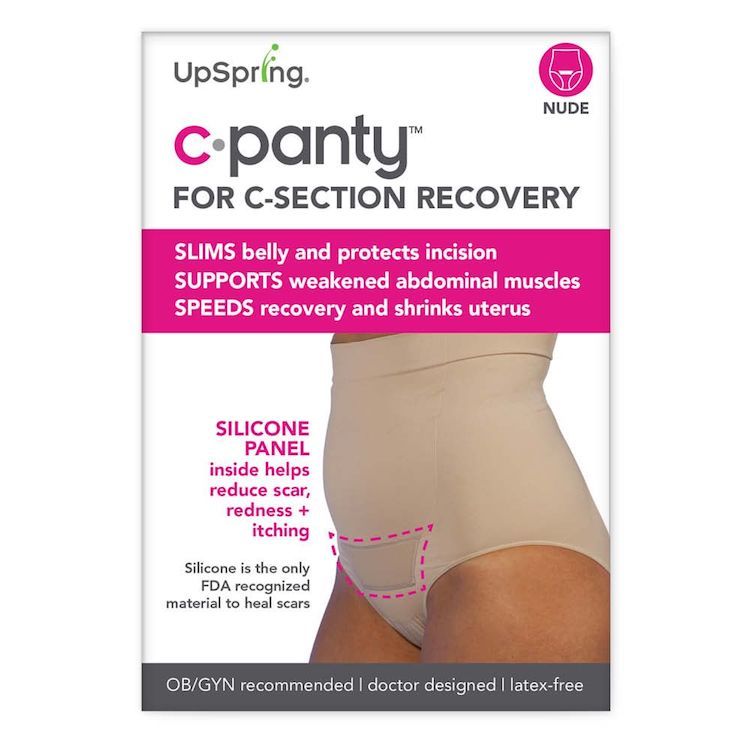
The first assessment should take place no later than 3 weeks postpartum. A comprehensive final visit should occur no later than 12 weeks postpartum.
During these checkups, you and your doctor will discuss topics like:
- your physical recovery
- your mental health
- your energy levels and how you’re sleeping
- how your baby is doing and their feeding schedule
- birth control and whether you’re considering having more children
- chronic condition management
- how you’re managing any pregnancy-related complications, such as high blood pressure
You’ll probably feel some soreness in the incision, and you may have bleeding or discharge for up to 6 weeks after the C-section. That’s expected.
However, the following symptoms warrant a call to your doctor, because they could signal an infection:
- redness, swelling, or pus oozing from the incision site
- pain around the site
- fever of more than 100.4°F (38°C)
- bad-smelling discharge from the vagina
- heavy vaginal bleeding
- redness or swelling in your leg
- difficulty with breathing
- chest pain
- pain in your breasts
Also call your doctor if you feel sad and your mood never seems to lift, especially if you have thoughts of hurting your baby or yourself.
Finally, if you have a friend or sibling who went through a C-section, try not to compare yourself to them. Every person’s experience with this surgery is different.
Focus on your own healing right now and give your body the time it needs to get back to your normal.
C-Section Recovery Timeline and Aftercare – Cleveland Clinic
Having a baby is a major milestone in life. While it can be exciting, it can also take a toll on your body. Compared to a vaginal delivery, if you’ve had a cesarean delivery (C-section), you need to take extra precautions and give yourself even more time to recover from childbirth.
C-sections account for 31.7% of all deliveries in the U.S. As with any major surgery, it takes time for your body to heal. So what can you do? And what should you not do?
Ob/Gyn Erin Higgins, MD, explains what your recovery will look like and what to expect.
How long does it take to recover from a C-section?
It takes about six weeks to recover from a C-section, but each person’s timeline will be different. An incision — typically a horizontal cut made in your lower abdomen — can take weeks to heal.
An incision — typically a horizontal cut made in your lower abdomen — can take weeks to heal.
During that time, it’s recommended that you avoid lifting anything heavier than your baby. Don’t have sex or participate in rigorous exercise either.
Your doctor may recommend a C-section if:
- You’ve had one in the past.
- If your baby is in distress or in a breech position.
- The labor is not progressing.
- If you’re giving birth to multiple children at once.
Recovery timeline
While most individuals recover in about six weeks, it’s important to remember each person’s journey is different. Here’s what to expect.
Week 1
Most people will spend two to four days in the hospital after a C-section.
During this time, the hospital staff will help with pain management, ensure you’re eating and drinking enough and help you move around. This is all in addition to bonding with your newborn, which can include attempting to breastfeed.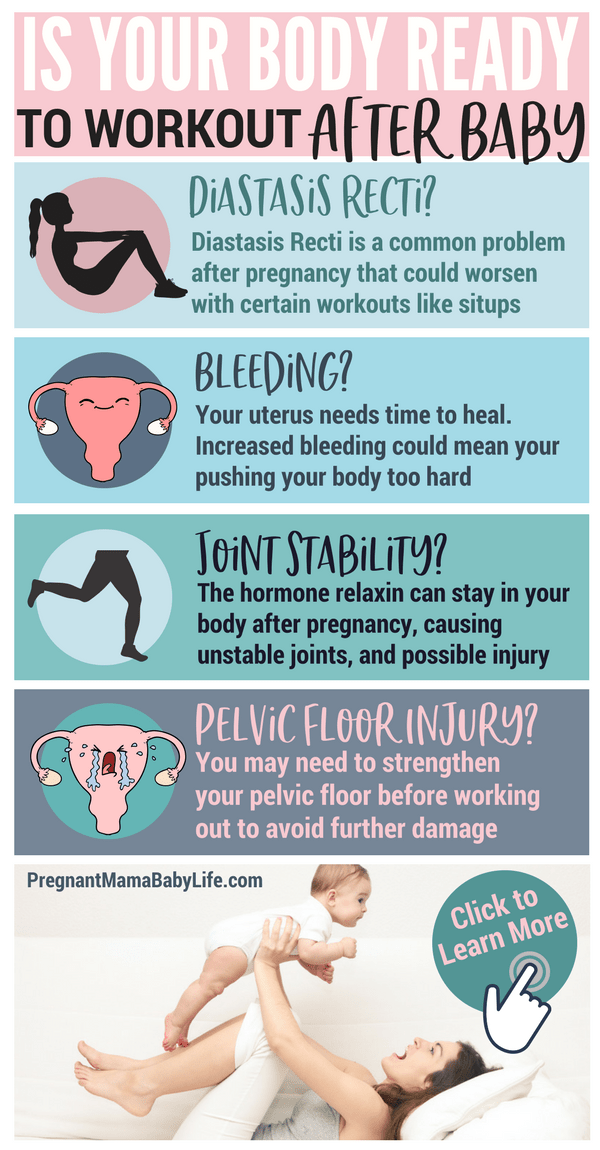
Advertising Policy
Once you return home, it’s important to take it easy and avoid lifting, twisting or any movements that can put pressure on the incision. “Those muscles are pretty weak because of the incision,” says Dr. Higgins. “It can be uncomfortable.”
Make sure you keep your incision clean and dry. To manage pain at home, Dr. Higgins recommends taking acetaminophen or ibuprofen on a regular schedule. An abdominal binder, a wide compression belt that goes around your stomach, can also be used to offer additional support and avoid putting stress on sutures.
It is also normal to have vaginal bleeding after a C-section, though it’s typically not as heavy as after a vaginal delivery. “It can last up to four to six weeks postpartum,” says Dr. Higgins. “Generally, the first few days are the heaviest with the passing of blood clots up to the size of a golf ball.” Contact your doctor if you’re soaking one pad per hour or passing large clots.
Having a support system around you is key during your recovery.![]() Dr. Higgins suggests having your partner, family members or friends help with tasks like planning and making meals, doing laundry and even helping to care for your baby.
Dr. Higgins suggests having your partner, family members or friends help with tasks like planning and making meals, doing laundry and even helping to care for your baby.
And do get up and move around, which can help avoid blood clots. “It’s recommended that you get up and walk around,” says Dr. Higgins. “We don’t want someone lying in bed for two weeks.”
Weeks 2 through 5
Your first postpartum visit should happen during the second week. At that time, your doctor will inspect the incision site and check that your recovery is progressing along.
Dr. Higgins says you should reach out to your physician earlier if you experience the following:
- Excessive pain.
- Infection at the incision site.
- Abnormal discharge.
- Heavy bleeding.
- Chest pain.
- Shortness of breath.
- Fever.
- Pain or swelling in your legs.
Over the next several weeks, you might also experience “baby blues,” caused by short-term fluctuations in hormones that can affect your mood. This is normal, says Dr. Higgins. But if you experience feelings like being depressed or feeling hopeless, talk to your doctor about postpartum depression and what it means.
This is normal, says Dr. Higgins. But if you experience feelings like being depressed or feeling hopeless, talk to your doctor about postpartum depression and what it means.
Advertising Policy
“If those feelings start disrupting your life and cause problems bonding with your baby, your doctor can offer some treatment options,” says Dr. Higgins. Options can range from medication, therapy or even support groups for new parents.
Week 6
At this point, you should have your final postpartum appointment with your doctor. Remember that everybody heals and recovers at different rates so it’s important to talk to your doctor about how you feel — and it’s OK if you need more time.
“Physical recovery from a C-section puts a lot of stress on the body,” says Dr. Higgins. “Resting and allowing your body to heal is very important.”
If your pain has decreased and the incision is properly healing, you may be given the green light to resume normal daily life.
“When a person has fully recovered, we view it as their graduation day,” says Dr.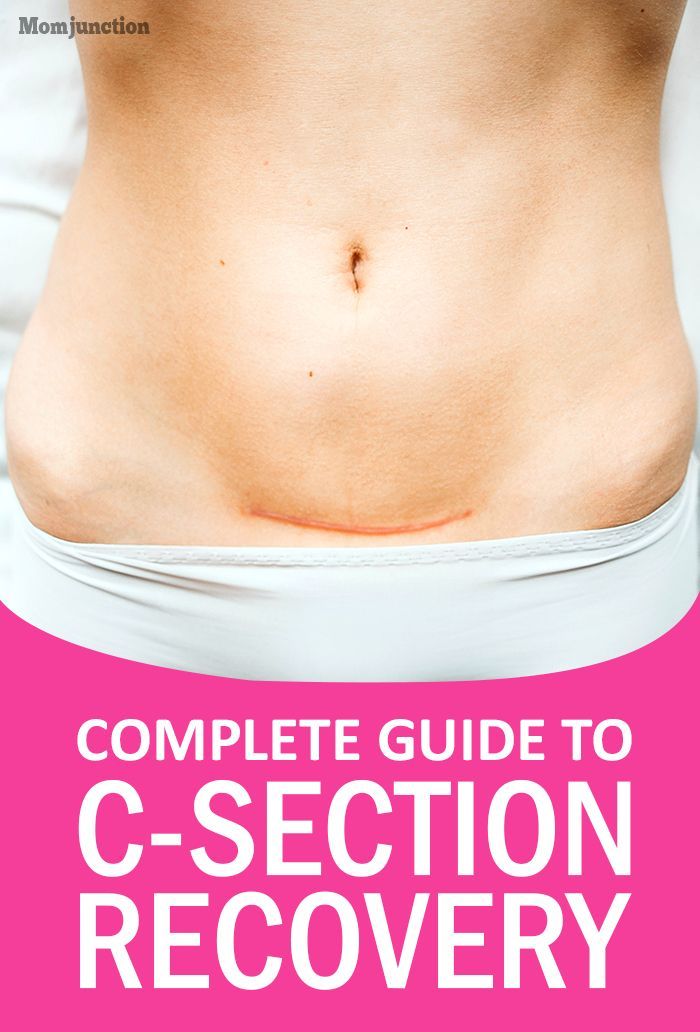 Higgins. “Sex, exercise — I recommend that they start those things slowly and gradually increase activity.”
Higgins. “Sex, exercise — I recommend that they start those things slowly and gradually increase activity.”
Tips to recovery
Having a newborn and recovering from surgery doesn’t leave a lot of time for self-care. But it’s crucial you take time to take care of yourself. Here are a few tips on what to do.
- Get plenty of rest. Your body needs to heal, so don’t push yourself to return to your normal activities too soon.
- Avoid lifting heavy objects. You shouldn’t lift anything heavier than your baby.
- Talk a walk. Skip the heart-pounding exercise like running or lifting weights, but walking will help your body heal.
- Remember to eat. It can be overwhelming those first few weeks with a newborn but it’s important to make sure you’re eating a healthy diet — for you and your baby.
- Monitor your pain. Use a heating pad to provide relief and follow any directions from your doctor when it comes to pain medication.
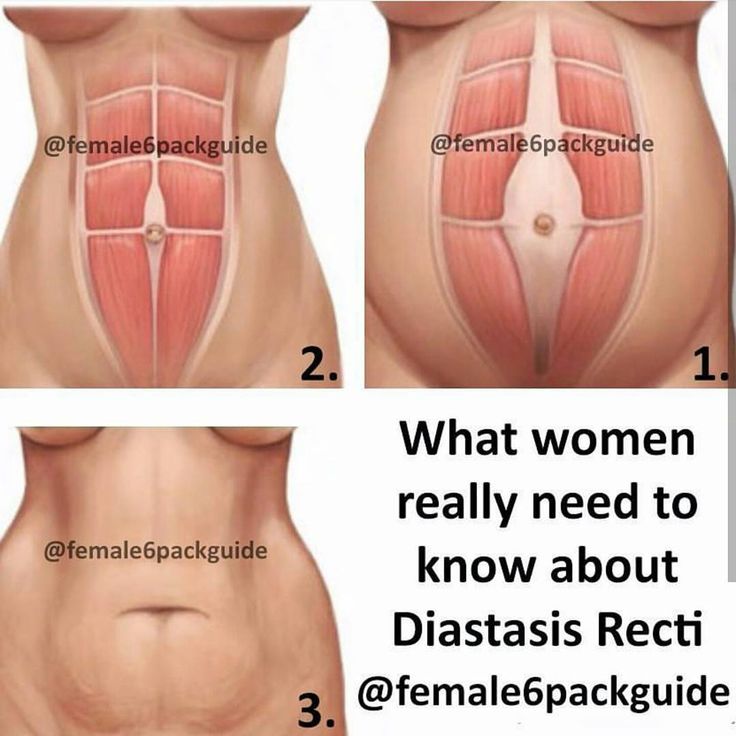
incision, sutures, processing, care after surgery
Caesarean section is always performed in the interests of the mother and fetus when a woman cannot give birth through the natural birth canal.
Every year there is an increase in the number of operative delivery in obstetric practice. For example, in the 90s, the number of caesarean sections was 10.2%, and by 2005 - 17.9% 1 .
Currently, the number of primiparous women over 35 has increased, as well as the number of in vitro fertilization (IVF). The widespread use of modern methods of fetal diagnostics: ultrasound, cardiac monitoring (registration of fetal cardiac activity and contractile activity of the uterus), X-ray pelvimetry (to determine the degree of narrowness of the bones of the female pelvis) - make it possible to better detect pregnancy anomalies and establish indications for caesarean section.
If indications for a caesarean section are determined during pregnancy, then surgery is planned. With a planned caesarean section, the frequency of postoperative complications is 2-3 times less than with an emergency operative caesarean section.
With a planned caesarean section, the frequency of postoperative complications is 2-3 times less than with an emergency operative caesarean section.
Vaginal disinfection with a solution of chlorhexidine or povidone-iodine is performed before caesarean section for ruptured membranes and in women in childbirth to reduce the risk of postoperative endometritis (inflammation of the inner layer of the uterus) 2 .
Povidone iodine
Characteristics and properties of povidone iodine. What is povidone-iodine used for? Instructions for use of the solution, ointment, suppositories Betadine ® with povidone-iodine.
More
Types of incisions for caesarean section
By localization incisions on the uterus for caesarean section are:
Cesarean section is classified as a complex surgical intervention 1 . Most often, manipulation is performed in the lower segment of the uterus with a transverse incision due to better healing of the postoperative wound 2 in this area.
Most often, manipulation is performed in the lower segment of the uterus with a transverse incision due to better healing of the postoperative wound 2 in this area.
There are 3 types e steps through the anterior abdominal wall :
- Pfannenstiel incision (transverse incision of the skin and subcutaneous tissue along the suprapubic fold)
- Joel-Cohen incision (transverse incision of the skin and subcutaneous tissue 2.5-3 cm below the line connecting the anterior superior iliac spines)
- Inferior median incision (incision along the line between the umbilicus and the pubic bone)
Suturing
After the birth of the child and afterbirth, the uterus, peritoneum, abdominal muscles, and skin are sutured.
Tissue suturing is carried out with absorbable synthetic threads from catgut, vicryl, monocryl and others. Catgut threads dissolve in about 100 days, monocrylic threads in 90-120 days, Vicryl threads will dissolve by 42 days.
Immediately after a caesarean section, cold is applied to the lower abdomen for two hours to reduce bleeding. According to the indications, a woman is prescribed drugs that improve blood flow, painkillers, anticoagulants (prevent the formation of blood clots), oxytocin (improves the contractile function of the uterus), antibiotics. Some time after a caesarean section, unpleasant pain in the lower abdomen will persist. On the 5th day, ultrasound is prescribed to determine the condition of the wound. Staples or sutures from the anterior abdominal wall are removed on the 6-7th day, and on the 8th day the woman is discharged under the supervision of a antenatal clinic doctor at the place of residence.
Stitching algorithm after caesarean section
6 hours after caesarean delivery, the bandage is removed to minimize the risk of wound infection 3 .
Stitches after caesarean section are treated daily 1 .
Processing may include the following steps:
Washing
If washing of the suture area is required, disinfecting solutions can be used: povidone-iodine, potassium permanganate solution, chlorhexidine solution.
Disinfection
At this stage, disinfectants and drying agents are applied: based on iodine, alcohol-containing solutions of brilliant green, fucorcin and others.
Let's consider the most popular means for decontamination of postoperative sutures.
Applying a dressing
After each treatment of the suture, it is recommended to apply a sterile dressing, which will protect the injured area from external influences.
Povidone-iodine solution (Betadine®)
Povidone-iodine solution ( Betadine ® ) is a modern broad-spectrum antiseptic. It is used in various areas of modern medicine due to its activity against many microorganisms and a favorable benefit/risk ratio.
Solution Betadine ® is active against bacteria, viruses, fungal pathogens and protozoa 4 . In this disinfectant, the iodine molecule is attached to the carrier - povidone, which made it possible to exclude alcohol from the composition and thereby ensure comfortable use of the drug, without burning sensations, even when applied to fresh wounds and sutures.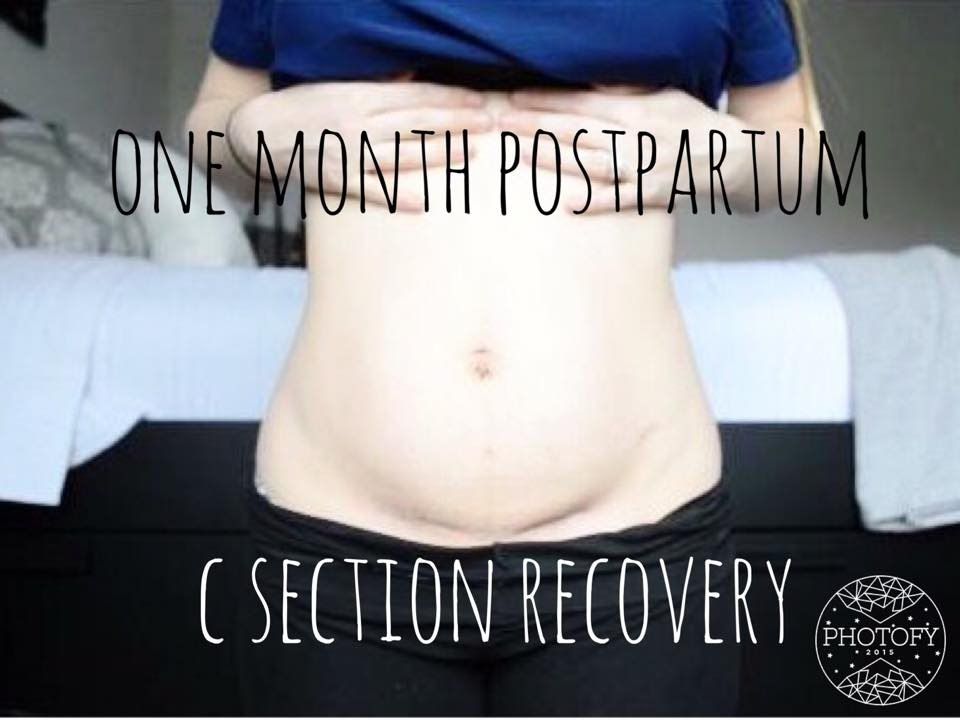 When treating wounds, the components of the solution Betadine ® are practically not absorbed into the body 8 , which ensures a high safety profile.
When treating wounds, the components of the solution Betadine ® are practically not absorbed into the body 8 , which ensures a high safety profile.
Wash with solution Betadine ® diluted 1:10, and used undiluted for joint lubrication. It is important to note separately that the solution Betadine ® allows for comfortable use without burning. Yellow-brown staining is easily washed off the skin with plain water.
Instruction
Where can I buy Betadine® solution?
Buy
Buy
Buy
Or
Find nearest pharmacy
Search
Based on povidone-iodine, Betadine® ointment is produced, which has a dual effect:
- povidone-iodine disinfects
- macrogol, which is part of the ointment, helps to “pull out” pus when it appears as a result of complications of wounds
Ointment0 Betadine0 ® can be used under dressings in a thin layer without rubbing into the incision twice a day.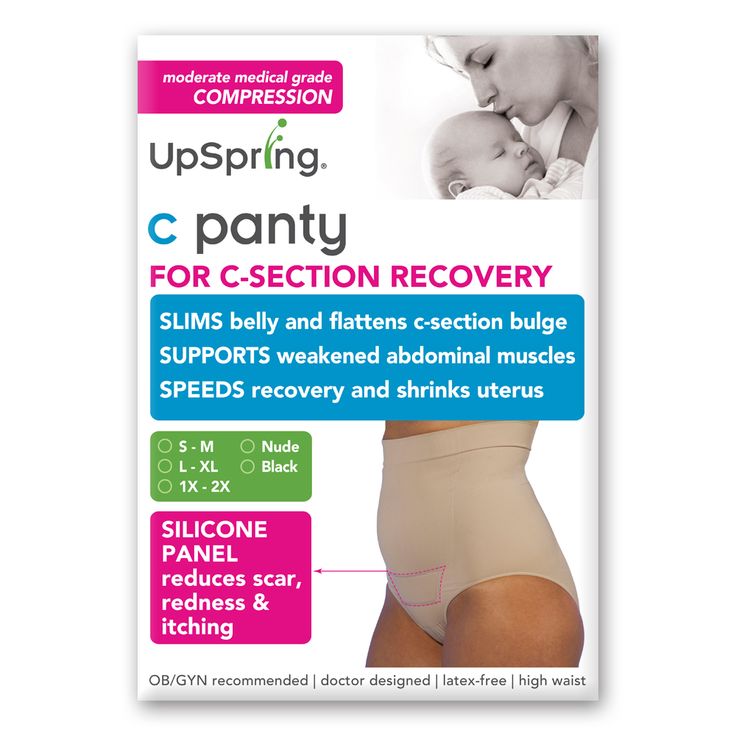
In the treatment of infected wounds under wipes soaked in solution or Betadine Ointment ® , during the first 5-7 days the area of edema noticeably decreased and the amount of purulent discharge decreased, there was also a decrease in pain 5 .
Instruction
Where to buy Betadine® ointment?
Buy
Buy
Buy
Or
Find nearest pharmacy
Search
Solutions of hydrogen peroxide 3% and potassium permanganate
Solution of hydrogen peroxide 3% and solution of potassium permanganate (manganese) belong to the group of oxidizers. Upon contact with an unhealed suture, the active substance decomposes with the release of active oxygen, which causes a disinfecting effect. They are especially effective for suppressing anaerobic infections (clostridia, streptococci, shigella, yersinia, fusobacteria and others), for these microorganisms oxygen is detrimental, since an oxygen-free environment is needed for the normal functioning of these organisms.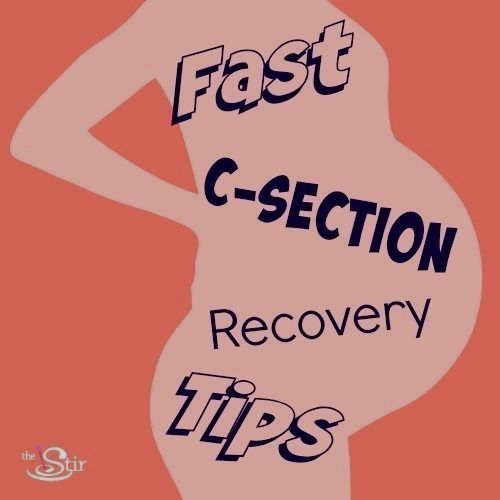 However, treating a wound with hydrogen peroxide does not guarantee against contracting a wound infection 6 , must not be used under occlusive (airtight) dressings 4 .
However, treating a wound with hydrogen peroxide does not guarantee against contracting a wound infection 6 , must not be used under occlusive (airtight) dressings 4 .
Use of hydrogen peroxide may cause allergic reactions 7 .
To prepare a solution of potassium permanganate, several crystals of potassium permanganate are placed in a container with warm water, only freshly prepared agent 8 is used. Potassium permanganate is subject to special control and accounting in the Russian Federation, therefore, the sale of this product is limited. Moreover, an undissolved crystal of potassium permanganate can cause skin burns.
Chlorhexidine solution
Chlorhexidine solution 9 belongs to the group of antiseptic and disinfectants, active against viruses, bacteria, fungal infections. Use 2-3 times a day with a mandatory exposure of 1-3 minutes. Simultaneous use with iodine is not recommended. It is used with caution during breastfeeding.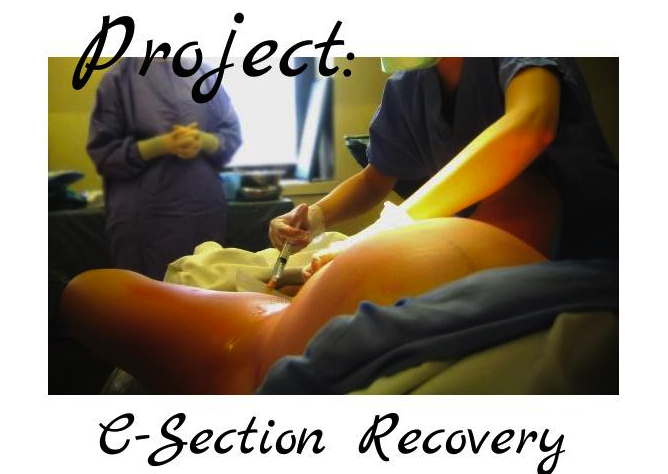
In addition, today there is a decrease in the effectiveness of a number of antiseptic preparations having a chlorine-containing molecule 11 .
Care of a maturing scar
After the sutures have dissolved, the wound has healed, scar tissue begins to form. At this stage, to prevent the development of rough scars, it is recommended to use creams and gels based on silicone, hyaluronidase, natural plant components (for example, combined preparations based on onion extract, sodium heparin and allantoin).
Possible complications from incorrect or no handling
On the first day after caesarean section, the temperature may rise to 38°C and the number of leukocytes in the blood may increase 3 .
In the modern medical community, the strategy of "Accelerated recovery after surgery" is actively practiced - the woman in labor is prescribed pain relief, prevention of postoperative blood clots, and early physical activity is recommended.
4-6 hours after the operation, they are allowed to sit up in bed, put their feet on the floor, then walk. This reduces the risk of thrombosis, congestion in the lungs, the formation of adhesions in the abdominal cavity 3 .
However, a woman may experience the following problems with suture healing: Therefore, after the operation, it is not recommended to lift weights.
Formation of a hypertrophic or keloid scar
- If the scar tissue begins to protrude above the skin surface, then most likely a hypertrophic or keloid scar has formed 10 .
- Keloid scars form not earlier than 3 months after suture, may extend beyond the suture, often accompanied by pain 10 . Grow indefinitely.
- Hypertrophic scars begin to form in the first month after skin injury, do not extend beyond the suture and grow over the next 6 months. Hypertrophic scars can spontaneously decrease in size.
Infection/suppuration of the wound
Signs of infection are: increasing pain in the suture area, swelling, redness of the skin, the suture may become hot to the touch, pus may be released when pressed.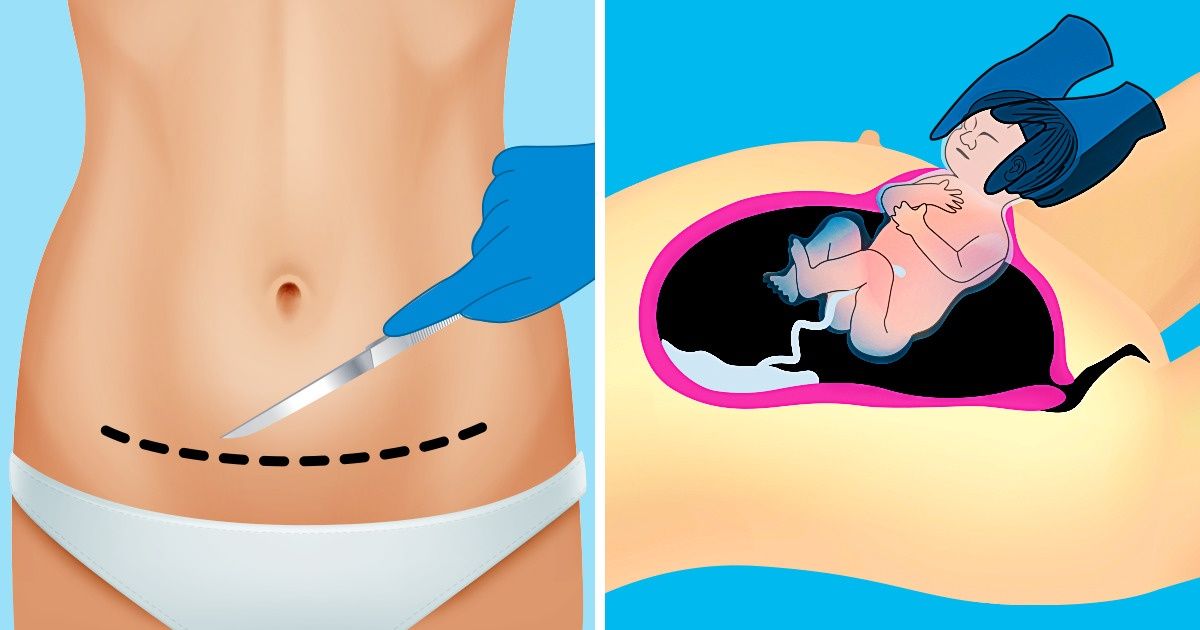 Infection of the wound slows down the healing process and the inflammatory process can spread to the abdominal muscles and abdominal cavity, which can be life threatening.
Infection of the wound slows down the healing process and the inflammatory process can spread to the abdominal muscles and abdominal cavity, which can be life threatening.
Therefore, it is important to keep the area of the healing suture clean, treat it with antiseptics in a timely manner, do not touch it with unwashed hands, and wear clean underwear.
As the postoperative wound heals, itching may appear in the area of scar formation. This is the norm when healing any wounds, the main thing is not to accidentally injure the suture and not to remove the suture material on your own.
Frequently Asked Questions
When can I bathe after a caesarean section?
The bandage from the suture after caesarean section is removed after 6 hours, after which it is possible to take a shower daily 3 .
How do you know if a caesarean section is healing properly?
Over time, swelling and soreness should decrease, as well as the amount of sanious discharge in the suture area.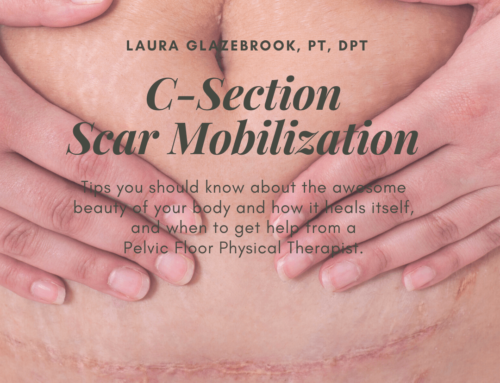 There should be no purulent discharge. The skin around the suture becomes normal in color, although the scar itself may remain red for several months.
There should be no purulent discharge. The skin around the suture becomes normal in color, although the scar itself may remain red for several months.
How can ugly scars after caesarean section be treated?
For the treatment of keloid and hypertrophic scars, doctors prescribe dyes or based on carbon dioxide)
To prevent the formation of scars after the healing of the suture, preparations based on hyaluronidase, plant extracts, and silicone are prescribed.
How long can you not lift weights?
To reduce the load on the abdominal muscles and improve their healing, physical activity is limited to 1.5 months.
Elena Mikhailovna Moshkova
Dermatovenereologist, Head of CDO for the provision of paid services St. Petersburg State Budgetary Institution of Healthcare "City Dermatovenerologic Dispensary", St. Petersburg
Read on the topic
Ointment based on iodine 9002 : mechanism of action, scope.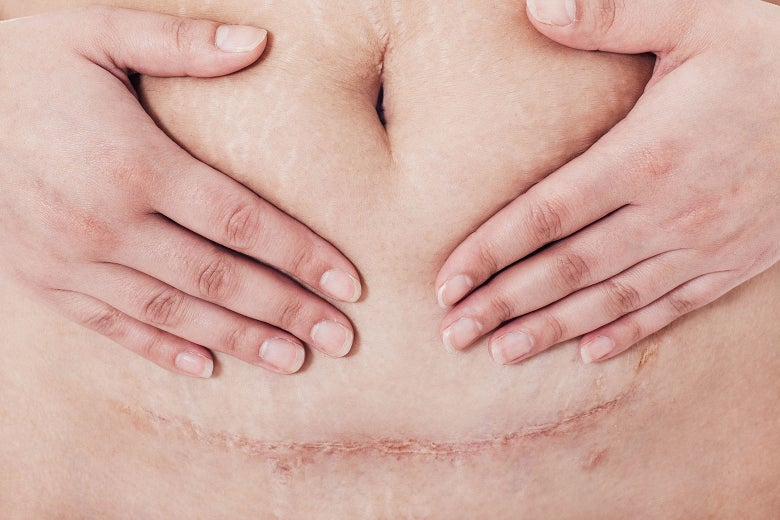 Ointment Betadine® based on povidone-iodine for the treatment of various skin diseases.
Ointment Betadine® based on povidone-iodine for the treatment of various skin diseases.
More
Povidone iodine
Characteristics and properties of povidone iodine. What is povidone-iodine used for? Instructions for use of the solution, ointment, suppositories Betadine ® with povidone-iodine.
More
Infected wounds
Not all abrasions and cuts heal quickly and without complications. How to treat infected wounds?
Read more
References
- "National guide to obstetrics". Edited by E.K. Ailamazyan, V.I. Kulakova, V.E. Radzinsky, G.M. Savelyeva, 2015.
- Clinical guidelines. Singleton birth, delivery by caesarean section, 2021.
- Clinical guidelines. Singleton birth, delivery by caesarean section, 2020.
- Instructions for medical use Betadine ® (solution, ointment), P N015282/03, P N015282/02.
- breast cancer No. 29 dated 12/23/2010 "The use of the drug Betadine ® in the treatment of infected wounds.
 " Authors: V.V. Mikhalsky, A.E. Bogdanov, S.V. Zhilina, A.I. Prvidentsev, A.I. Anikin, A.A. Ulyanina.
" Authors: V.V. Mikhalsky, A.E. Bogdanov, S.V. Zhilina, A.I. Prvidentsev, A.I. Anikin, A.A. Ulyanina. - Hydrogen peroxide, 3% solution, radar.
- Rational pharmacotherapy of skin diseases and sexually transmitted infections. Edited by A.A. Kubanova, 2007.
- Potassium permanganate, powder. radar.
- Chlorhexidine solution, RLS.
- "Federal Clinical Guidelines for the Management of Patients with Keloid and Hypertrophic Scars", 2015
- "Prevalence of microbial resistance to chlorhexidine from a systematic review and analysis of regional resistance monitoring." Authors: Kvashnina D.V., Kovalishena O.V. Fundamental and clinical medicine. 2018;3(1):63-71.
Suture after caesarean section: healing process, care and features of recovery To extract the child, a transverse incision 10-15 cm long is made directly above the pubis, after which a neat cosmetic suture is applied. However, such a seam requires some care.
After the end of anesthesia, the mother feels pain in the lower abdomen, which requires additional anesthesia in the hospital.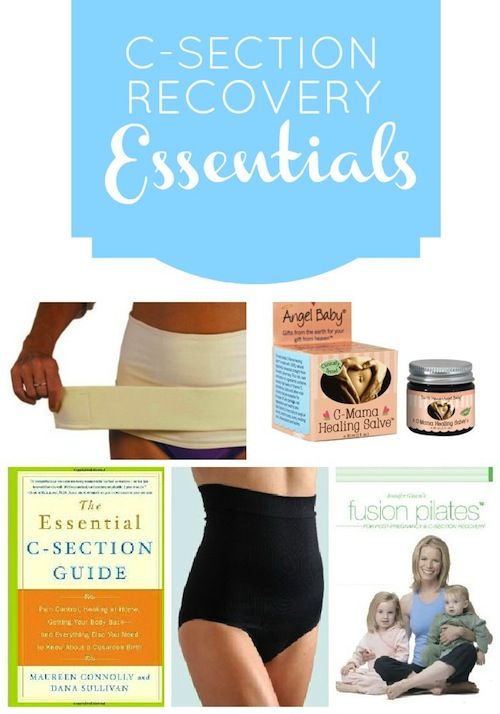 Painful sensations can persist during the first weeks after the operation, as a rule, they do not require additional analgesics. "Quiet" pulling pains in the suture area can be felt up to a year.
Painful sensations can persist during the first weeks after the operation, as a rule, they do not require additional analgesics. "Quiet" pulling pains in the suture area can be felt up to a year.
Features of suture healing after CS, as after any operation, are: sealing of the suture and the area around it, the release of a small amount of ichor and clear liquid from the incision - all this is the norm. This is a natural healing process. The seam becomes soft after a year. The reason to see a doctor may be: discharge of pus, blood clots from the incision, localized edema in the area of the scar, its increase with increased pain. Immediately after a cesarean, numbness occurs in the lower abdomen. This is due to the intersection of small nerve fibers during incision, sensitivity will occur after a few months, when the nerve fibers recover again. 2-3 weeks after the operation, itching in the suture area may disturb. Tissue healing is always accompanied by such symptoms. The process is long - the seam can itch for up to a year.
The process is long - the seam can itch for up to a year.
The main fear of women in childbirth is the possibility of rupture of the seam. The latter is rare. You can determine such a complication by the following symptoms: the incision is very sore and swollen, redness is observed in this area, pus with blood and an unpleasant odor is released from the wound, and a rise in temperature is noted. In such a situation, you must immediately consult a doctor!
Normal healing process
Thanks to modern materials and well-established caesarean section technique, the suture heals quickly. Mom is discharged already on the 6-8th day, as a rule, after the removal of stitches, and self-absorbable ones “disappear” themselves after 1-2 months. At the time the woman is in the maternity hospital, the medical staff monitors the healing of the suture, sterile dressings are changed daily, and the scar is regularly treated with antiseptics.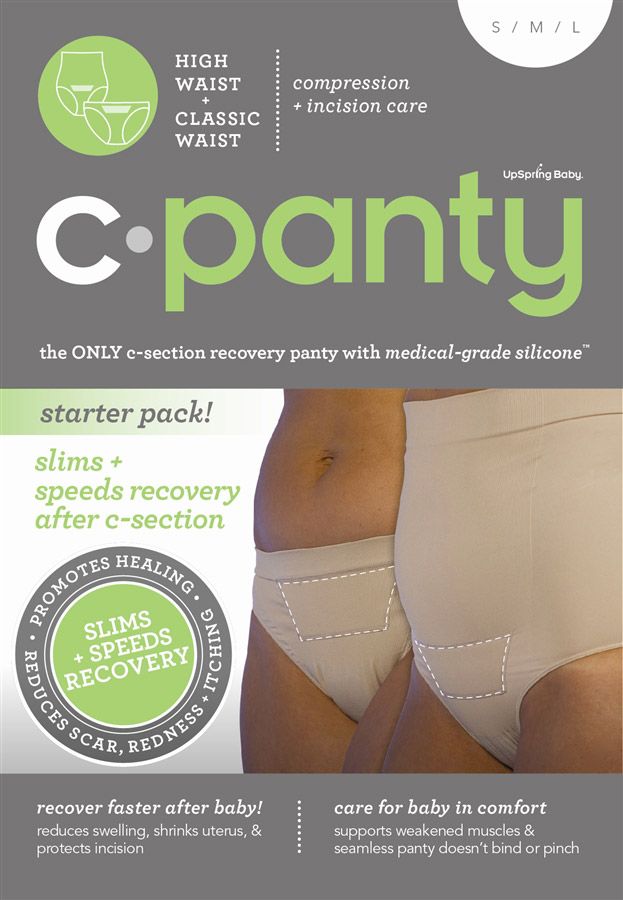 After discharge, the mother will have to process the seam, there are the same rules as in the hospital - daily dressing change, regular wound treatment with an antiseptic. After discharge from the maternity hospital, doctors prescribe follow-up examinations at the stage of antenatal consultation.
After discharge, the mother will have to process the seam, there are the same rules as in the hospital - daily dressing change, regular wound treatment with an antiseptic. After discharge from the maternity hospital, doctors prescribe follow-up examinations at the stage of antenatal consultation.
Seam treatment is best done after a shower. Water procedures (but not taking a bath!) are allowed on the 8th-10th day after the operation, because wounds heal faster on clean skin. Restless mothers do not take a shower for weeks, this is more harm than good - poor hygiene can provoke the development of inflammation. The postoperative wound, as a rule, is treated first with peroxide, and then with brilliant green, the doctor may prescribe other means: antibacterial ointments and solutions, powders, chlorhexidine, etc. After 2-3 weeks, if the wound heals normally, the treatment can be stopped. But it is necessary to continue monitoring the condition of the skin in this area. The seam is completely tightened in 1-2 months.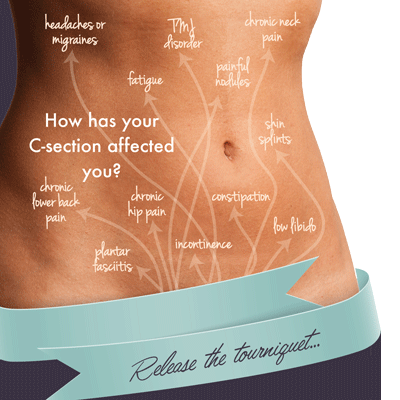
Lifestyle tips for better suture healing after CS:
- do not lift more than 3-4 kg for two months,
- do not take hot baths for the first 3-6 months,
- avoid skin exposure to high, low temperatures: saunas, sunburn, severe frost,
- enhanced fitness, stretching exercises,
- wear underwear made of natural fabric for half a year, it is important that the edges of the shorts do not touch the seam,
- do not scratch the wound until it is completely healed,
Women are often concerned about the appearance of the skin in the area of the formed scar after caesarean. It will not be possible to completely get rid of the scar, but proper care and treatment, as well as special cream gels to improve the appearance of the scar, will help make it less noticeable. They can only be used after the wound has completely healed, and for at least 2 months.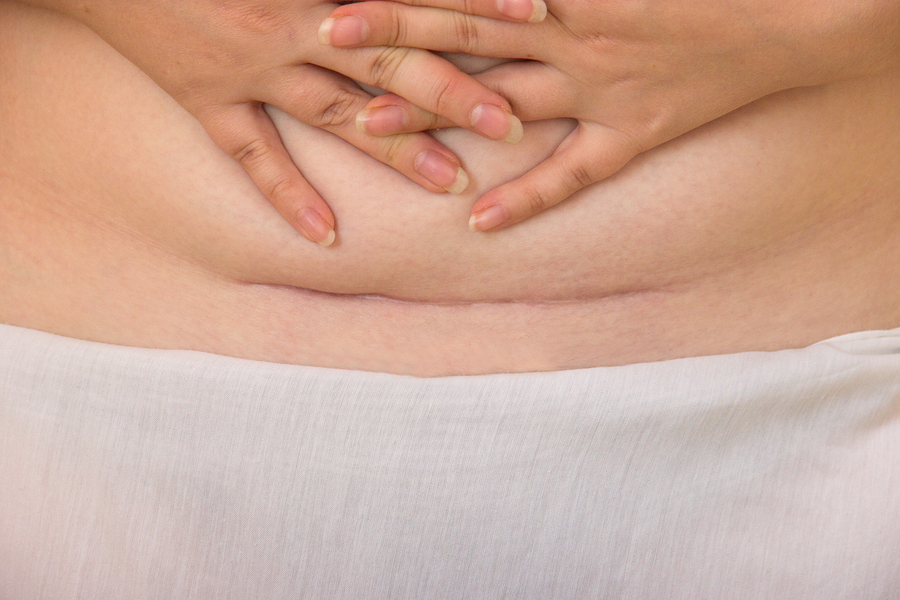 These tools help to significantly improve the appearance of both fresh and old scars. Sometimes the suture can heal with the formation of rough hypertrophic scar tissue, the cause of this complication is usually an individual feature of wound healing. Plastic surgery will help to remove this cosmetic defect, deep peeling, laser resurfacing or microdermabrasion can be an alternative.
These tools help to significantly improve the appearance of both fresh and old scars. Sometimes the suture can heal with the formation of rough hypertrophic scar tissue, the cause of this complication is usually an individual feature of wound healing. Plastic surgery will help to remove this cosmetic defect, deep peeling, laser resurfacing or microdermabrasion can be an alternative.
Cosmetic scar correction.
It is important to know that a scar also remains on the uterus after a cesarean. Ultrasound helps to control the healing of the suture on the uterus. It is carried out when the woman is discharged from the maternity hospital, then after 2 months, the adequacy of the healing of the suture can be finally judged only after 6 months on ultrasound.
Women who have had a caesarean section are advised to plan their next pregnancy no earlier than 2 years later. This period is considered optimal for stabilizing the scar on the uterus.